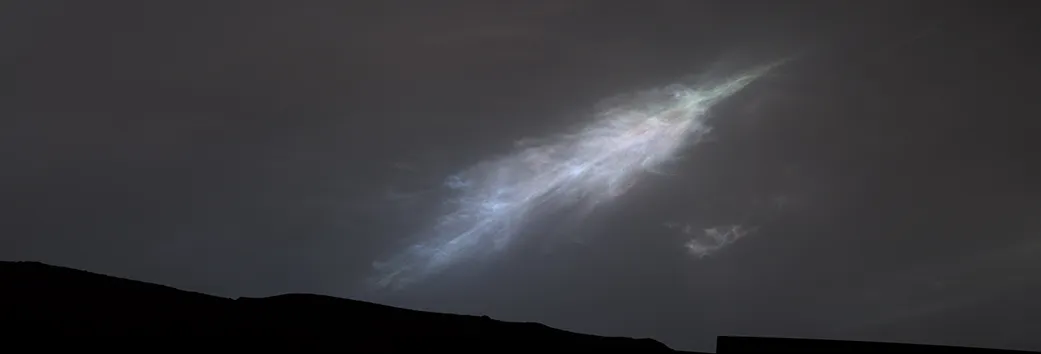NASA’s Curiosity rover captured an amazing image showing rays of sunlight passing through a bank of clouds on Mars.
The release of the image marked the first time sun rays had been viewed so clearly on the Red Planet.
The image was captured during a Martian sunset on 2 February 2023. As the Sun began to descend below the horizon, the rays illuminated a bank of clouds.

These Sun rays are also known as crepuscular rays, which comes from the Latin word for ‘twilight’.
The image was captured as part of Curiosity’s latest twilight cloud survey, following its observations of noctilucent clouds back in 2021.
Most Martian clouds are around 60km above the surface and made of water ice, but the clouds in these new images seem to be much higher, where it’s even colder, suggesting they could be made of carbon dioxide ice.
Curiosity also captured a wonderful set of colourful clouds that appear in a feather shape on 27 January 2023.
The rainbow-like colours of this cloud is known as ‘iridescence’ (read our guide on what causes a rainbow for more info)
Indeed, these images showing familiar solar phenomenon as we see on Earth helps us envisage what it would be like to spend a day on Mars.
Solar phenomena on Mars can look similar to those on Earth, because relatively speaking the distance from Mars to the Sun is similar to the distance from Earth to the Sun.

"Where we see iridescence, it means a cloud’s particle sizes are identical to their neighbors in each part of the cloud," says Mark Lemmon, an atmospheric scientist with the Space Science Institute in Boulder, Colorado.
"By looking at colour transitions, we’re seeing particle size changing across the cloud. That tells us about the way the cloud is evolving and how its particles are changing size over time."
